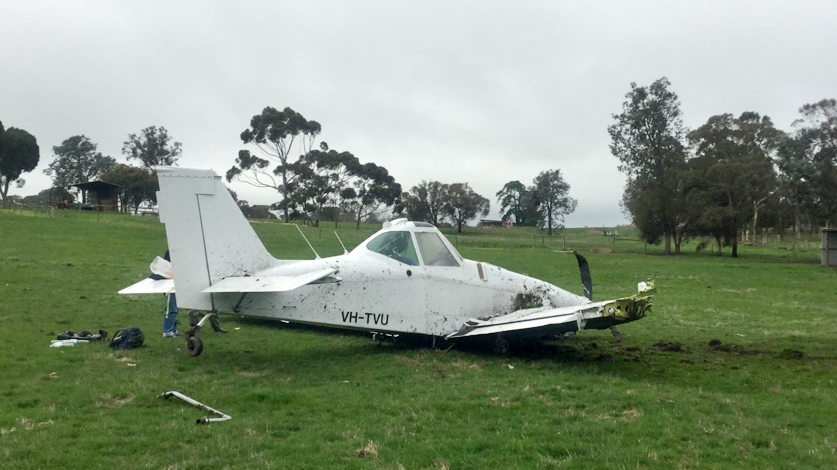
|
Key points:
|
A Piper PA-36 aerial application aircraft forced landed in a paddock shortly after take-off after experiencing an engine power loss that was probably the result of water-contaminated fuel, an ATSB investigation has found.
The Piper PA-36-300 Pawnee Brave aircraft, which had been fitted with a PT6A turbine engine, had just departed Latrobe Regional Airport, Victoria on 12 August 2019 on the first leg of a ferry flight on delivery to a new owner in New Zealand.
The day before the accident flight the pilot had detected water in the fuel in the chemical hopper – which, consistent with common industry practice, was being used as a ferry fuel tank. The pilot drained and refuelled the hopper before conducting a second fuel drain check. Then on the day of the accident flight, the pilot’s pre-flight inspection included a fuel drain check, checking the fuel by sight and smell, with no water detected.
The aircraft subsequently departed Latrobe Airport’s runway 21, turning to the north and staying below overcast cloud at around 500 feet AGL. As take-off flap was raised and departure course was set, engine power unexpectedly reduced to below idle.
With the aircraft unable to maintain height, the pilot elected to conduct a forced landing in a paddock. During approach, the pilot detected power lines and elected to fly below them but the aircraft struck and cut a smaller unseen power line running beneath the main power lines. The pilot then intentionally conducted a hard landing to avoid hitting a fence in the middle of the paddock while airborne.
During landing, the right wing struck a fence post resulting in the separation of the outboard wing section, while the undercarriage was removed after striking several tree stumps. The pilot sustained minor injuries in the impact.
ATSB Director Transport Safety Stuart Macleod said the loss of engine power was probably due to water‑contaminated fuel.
“A significant quantity of water was found in the aircraft’s fuel system, including the airframe fuel bowl, fuel pump and the fuel control unit, while an off-white jelly substance in the fuel section of the fuel control unit may have also hindered fuel flow to the engine,” Mr Macleod said.
While the pilot had conducted a fuel drain check pre-flight, the ATSB notes that using an opaque fuel sampling container and relying on sight and smell to determine fuel quality can be unreliable.
“Checking for water in fuel using an opaque sampling container to sight and smell the fuel is not in accordance with Civil Aviation Safety Authority and US Federal Aviation Administration guidance for pre-flight testing, and does not assure that there is no suspended water droplets, which is a particular risk for turbine fuel,” Mr Macleod said.
“Instead, there are a number of methods to positively check for the presence of water, such as using water-detecting paper or paste.”
The ATSB’s investigation also found that that the use of the chemical hopper as a ferry fuel tank was contrary to the aircraft manufacturer’s recommendation, and that no approved technical data was available for the modification.
“Using approved and documented engineering processes to make changes to safety-critical aircraft systems ensures the modification complies with applicable airworthiness standards or an equivalent level of safety,” Mr Macleod noted.
The accident also illustrated the importance of being mentally prepared for an emergency, particularly an engine failure or a power loss in a single-engine aircraft, Mr Macleod explained.
“In this case, the pilot had secured the four-point harness over their flying suit prior to take-off, and had conducted a pre-take-off brief and so was prepared to take immediate action in the event of an engine power loss.”
Read the report: Engine power loss involving Piper Aircraft Inc. PA-36, VH-TVU, near Latrobe Valley Airport, Victoria, on 12 August 2019


